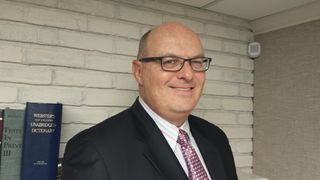
Psychology
How to Thrive in a VUCA World
The psychology of navigating volatile, uncertain, complex, and ambiguous times.
Posted July 31, 2017 Reviewed by Jessica Schrader
There is a lot of talk these days about the uncertainty of our world and the stress of navigating what many business experts refer to as a VUCA environment. VUCA stands for Volatile, Uncertain, Complex, and Ambiguous. To better understand the psychology of the VUCA world and how to better prepare our people the thrive in these circumstances I had the opportunity to speak with Dr. David Smith, Ph.D., organizational psychologist and CEO and President of EASI Consult LLC.

Michael Woodward: What defines the VUCA world and how is our current environment really any different than past eras of upheaval?
David Smith: Today’s world is changing at a pace that we have never seen before. Just turn on the evening news for five minutes and you’ll see a volatile and uncertain world. Or take a look at today’s technology challenges. Twenty years ago, no one would have believed that the advent of the iPhone would change the way we interact with the world, from children to elderly adults. We used to look each other in the eyes and have a conversation. Today, technology gives us more choices than we can easily keep up with, e.g., Facebook, LinkedIn, Twitter, Snapchat and more. Psychologists refer to this as a VUCA (volatile, uncertain, complex and ambiguous) world. Today’s pace of change is unlike anything we’ve ever seen.
MW: Who is best suited for success in a VUCA environment?
DS: Those who are flexible. Individuals who are open to change and thrive on new experiences. We refer to them as the learning agile. Because demands on us are changing every day, the behaviors that carried us through yesterday are not necessarily what will help us tomorrow. This means those individuals who are quick to learning from experience and move forward with new ideas will be better prepared to succeed in tomorrow’s world. This is especially true for our leaders in the business world. Marshall Goldsmith wrote a New York Times best-selling book that was appropriately titled What Got You Here Won’t Get You There.
MW: What is learning agility?
DS: Researchers have been studying this for over a decade. It’s only been in the last few years that a parsimonious definition of learning agility and how to measure it has evolved. The work of Dr. Warner Burke and his research colleagues at Columbia University provide us with scientific data that learning agility is made up of nine dimensions or behavior patterns. They include:
- Flexibility – Willingness to try new things;
- Speed – Rapidly grasping new ideas;
- Experimenting – Testing out new ideas;
- Performance Risk Taking – Taking on challenges;
- Interpersonal Risk Taking – Asking others for help;
- Collaborating – Leveraging the skills of others;
- Information Gathering – Increasing your knowledge;
- Feedback Seeking – Asking for feedback; and
- Reflecting – Taking time to reflect on your effectiveness.
MW: Why is learning agility so critical to thriving in a VUCA environment?
DS: In a VUCA world learning agile individuals are better equipped to be successful. They are open to learning from experience. They can quickly recognize better ways to get things accomplished. If we hold on to the way we always do things—stay in our comfort zones—we cease to grow intellectually and behaviorally. Have you ever been stuck in a rut? Do you feel like the world is passing you by? Well it is. The higher up individuals go within an organization, the more volatile, uncertain, complex and ambiguous the job becomes. To have potential for your next role in an organization, especially a leadership role, you must apply learning agility in your approach to challenges.
MW: How do you identify agile learners?
DS: There have been several attempts to measure learning agility in individuals. The most successful, in my opinion, is provided by Dr. Burke. He developed the Burke Learning Agility Inventory™ (Burke LAI). This is a simple, yet powerful, questionnaire made up of 38 questions. This is a new instrument that has received a lot of attention not only in the U.S. but outside the country as well. It’s available online and provides detailed feedback to “test-takers” in each of the areas of learning agility that I listed earlier. If your readers are interested in learning more about this. I can refer them to the appropriate person or persons.
MW: Can you teach agile learning?
DS: Yes. We’ve seen that learning agility is best defined in terms of behaviors or behavior patterns. Unlike personality traits that are more engrained by the time you reach adulthood, learning agility is a combination of base line cognitive skills but more importantly motivation to think outside the box, try new things and learn from them. By giving people feedback regarding how they deal with behaviors that make up learning agility, e.g., a willingness and ability to switch between different tasks or jobs as needed, you can get them to practice these behaviors and add them to their natural way of doing things.
MW: What are forward thinking organizations doing to teach their people to become agile learners?
DS: They start with assessment, taking inventory of the level of learning agility that already exists, or not, within the organization. Keep in mind that learning agility is impacted by situational factors, most importantly, does the work environment reinforce behaviors that make up learning agility. Are innovative ideas embraced? What are the consequences of taking a risk and failing. Forward thinking organizations send a message to everyone that learning agility is valued. They can do this by measuring the level of learning agility that exists in its workforce, feeding back the results and creating individual development plans for key individuals.

